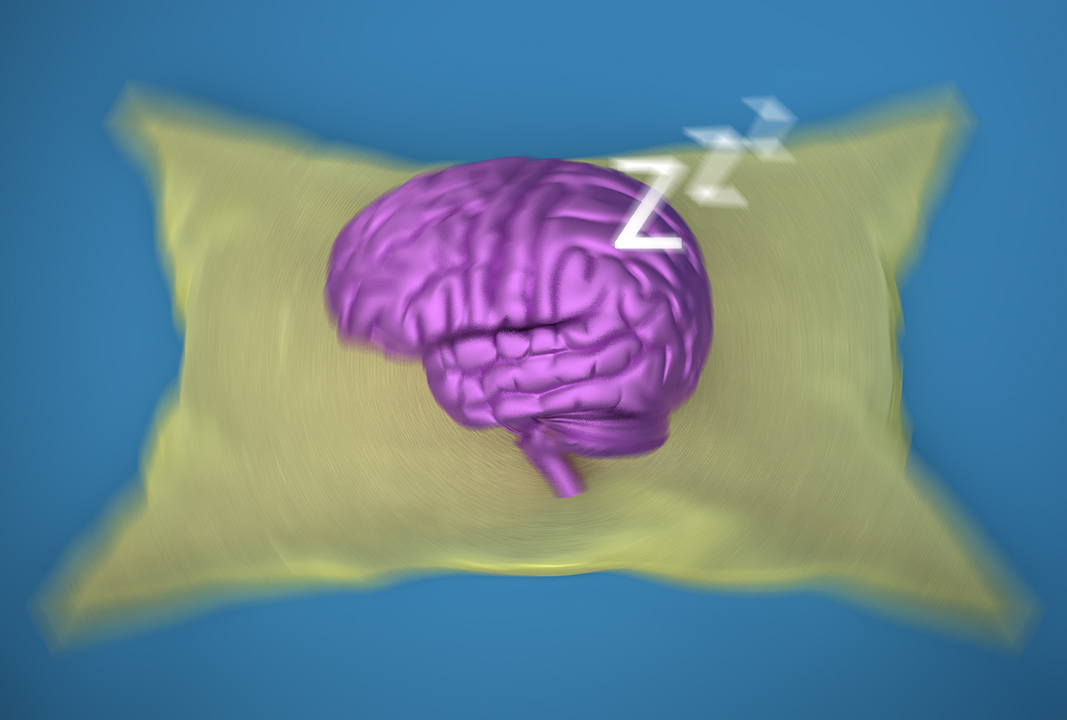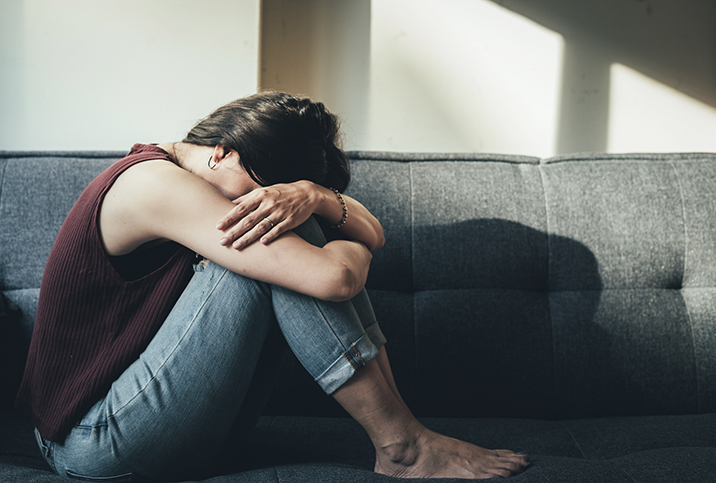What Are the Signs and Symptoms of PTSD?

Post-traumatic stress disorder (PTSD) is a psychiatric disorder triggered by a traumatic event, either from witnessing or experiencing it. Common symptoms of PTSD include severe anxiety, flashbacks, nightmares, avoidance and uncontrollable negative thoughts.
Researchers believe PTSD symptoms contribute to sexual difficulties if the disturbing thoughts or flashbacks happen during sexual activity, the person feels physically or mentally vulnerable during sex, sexual activity reminds them of the trauma, or negative beliefs make it difficult to be present during sex.
The authors of a 2015 study in The Journal of Sexual Medicine explored the relationship between PTSD and sexual issues through a review of studies on military personnel, a population group disproportionately affected by PTSD.
Trauma is not just limited to what people traditionally think of as traumatic.
The systematic review analyzed studies examining sexual function, sexual desire, erectile dysfunction, orgasm dysfunction, premature ejaculation, sexual pain and more. The review suggested that PTSD is related to an increased risk of developing one or more sexual problems.
Common signs and symptoms of PTSD
PTSD symptoms can be broken down into four main categories:
- Intrusive thoughts (such as having flashbacks to the event or nightmares)
- Avoidance behaviors (such as avoiding things that could trigger anxiety or memories of the traumas)
- Negative changes in thoughts and mood (such as increasingly negative assessments of self or the world)
- Changes in arousal and reactivity (such as increased physiological anxiety, fight-or-flight response and panic attacks)
"Some people might have severe insomnia," said Will Barone, Psy.D., a clinical psychologist with The Clinic in Berkeley, California. "Some might have severe anxiety and panic attacks. Many people experience a lot of physical reactivity, so their body is going into flight-or-fight mode on and off all the time as they're reacting to their surroundings. All of this can lead to depression and mood activation and can very much impact how someone lives their life and interacts with others and the world."
Trauma is not just limited to what people traditionally think of as traumatic.
"I have many clients who will say, 'I don't think I really have trauma because I've never been to war. I've never been sexually assaulted,'" Barone said. "But as we start to unwind their history and the symptoms and things they're dealing with, it becomes clear they've had some pretty notable things in their life that have led to these symptoms and led to their brain assessing things as potentially dangerous and creating these same problems."
Risks, causes and triggers of PTSD
Contrary to popular belief, PTSD is not just something war veterans experience. Anyone can have the disorder at any age. Women are more likely to develop it than men. A genetic predisposition could make some people more likely to develop it.
Triggers are everyday experiences that cause people with PTSD to relive their previous trauma.
High frequency and duration of trauma can put people at a greater risk for PTSD, according to Megan Spence, Psy.D., a clinical psychologist with The Clinic in Corte Madera, California. Spence gave the example of a veteran who has served three deployments and experienced the atrocities of war multiple times. Traumas with an interpersonal component where some violation occurred—sexual assault, for example—are another risk factor.
Trauma in which someone sustained physical injury increases the risk of PTSD.
"The vast majority of humans, 60 percent of people, have exposure to a trauma at some point in their lifetime, but only a small portion of those people will develop PTSD as a result," Spence said.
Another factor that can put someone at risk for PTSD is adverse childhood experiences(ACEs). ACEs are potentially traumatic events that happen to a child before they turn 18. Children whose homes include a parent with mental illness, domestic violence, substance use, physical and verbal abuse, neglect, and food insecurity are all at a greater risk of developing PTSD, Spence said.
Events that can potentially cause PTSD include the following:
- Serious accidents, such as a car crash
- Physical or sexual assault
- War and conflict
- Domestic abuse
- Being kidnapped or held hostage
- Torture
- Exposure to traumatic events at work
- Serious health problems
- Childbirth trauma, such as losing a baby
- The death of a loved one
"The interesting thing about PTSD is that you don't necessarily have to have had a trauma that happened to you directly," Spence said. "A good example of this is first responders, like firemen, who respond to a scene where something catastrophic happened, and they witness a lot of gruesome devastation. Those folks can be susceptible to trauma."
Triggers are everyday experiences that cause people with PTSD to relive their previous trauma. Common triggers can be people, places, sounds and smells that are similar to what they experienced during the traumatic event. For example, the smell of diesel fuel could remind war veterans of military trucks, and firecrackers or other loud noises could remind them of gunshots.
A rape victim could experience PTSD symptoms when triggered. For instance, a certain fragrance could be a reminder of the perpetrator. Seeing a similar sexual trauma in a movie could also set off symptoms.
Diagnosis and tests for PTSD
To have a clinical diagnosis of PTSD, an individual must meet the set of criteria published in the Diagnostic and Statistical Manual of Mental Disorders (DSM-5). First, they must have experienced or witnessed a traumatic event.
"From a clinical sense, we consider a trauma to be where your life or physical safety were jeopardized in some way or you witnessed or learned about someone else's life being jeopardized in some way," Spence said.
Within the diagnosis, there are the aforementioned four clusters of symptoms associated with the traumatic event: avoidance, re-experiencing, changes in arousal and reactivity, and changes to thoughts, feelings or behaviors about one's self or others.
To receive a diagnosis, an individual must experience at least one of the following conditions:
- The intrusion and avoidance symptoms
- At least two symptoms of both changes in arousal and reactivity and changes to thoughts, feelings or behaviors about oneself or others
The symptoms must affect the individual's ability to perform activities in their everyday life, and they must last for longer than a month.
Untreated PTSD can impair occupational functioning as well. Sleep problems and insomnia are common in people who have PTSD.
Therapists have an array of clinical tools at their disposal that help with the diagnosis. Evidence-based and widely researched screens are used to assess symptoms that someone might be having, Spence said. A screen is a short list of questions about the patient's thoughts, feelings and behaviors since the trauma. The screen helps a clinician understand if the patient should be assessed further.
If a provider suspects someone has PTSD, they will likely undergo a more in-depth assessment. Some evaluations only take about 15 minutes, whereas a more thorough evaluation may take a few hours.
When to seek help and who to see
If you are experiencing PTSD symptoms, it's important to seek professional help. If you fear that you may harm yourself or others, seek help immediately. If you are experiencing suicidal thoughts, call 988, the Suicide & Crisis Lifeline.
When looking for a mental health professional to help with PTSD, seek someone who is experienced, credentialed and specializes in the treatment of trauma. You may want to ask a family doctor or other trauma survivors for a referral. Call your area's local mental health clinic, counseling center or psychiatric hospital.
You also want to find a therapist who makes you feel safe and comfortable, as you need to feel comfortable and understood for therapy to work.
What happens if PTSD goes undiagnosed?
Undiagnosed and untreated PTSD can significantly reduce a person's quality of life because the avoidance can be so powerful, Spence said.
"[The avoidance] works for the short term," she said. "It's a way that people are trying to cope. Over time, that avoidance ends up hurting the person. It doesn't allow them to live a full life in many ways."
When PTSD goes undiagnosed and the avoidance continues, the symptoms are prolonged or even worsened, Spence said.
"It can show up and there can be, because of the hyperarousal symptoms, a feeling of being on edge and on guard," Spence said. "There can be a lot of isolation from other people. There can also be anger outbursts if you're constantly feeling like you're under threat."
Untreated PTSD can impair occupational functioning as well. Sleep problems and insomnia are common in people who have PTSD.
"If you're having nightmares every night, a lot of times people start to feel anxious about sleeping in general and they aren't sleeping much at all, so that has all kinds of physical health ramifications," Spence said. Sometimes, PTSD is not evaluated for. It's not well understood or assessed. It may even get missed because it looks like other conditions, such as depression.
PTSD is highly comorbid with substance use, depression, anxiety and panic attacks. Ultimately, there are higher suicide rates in PTSD populations. Untreated PTSD can contribute to other behavioral disturbances as well.


















